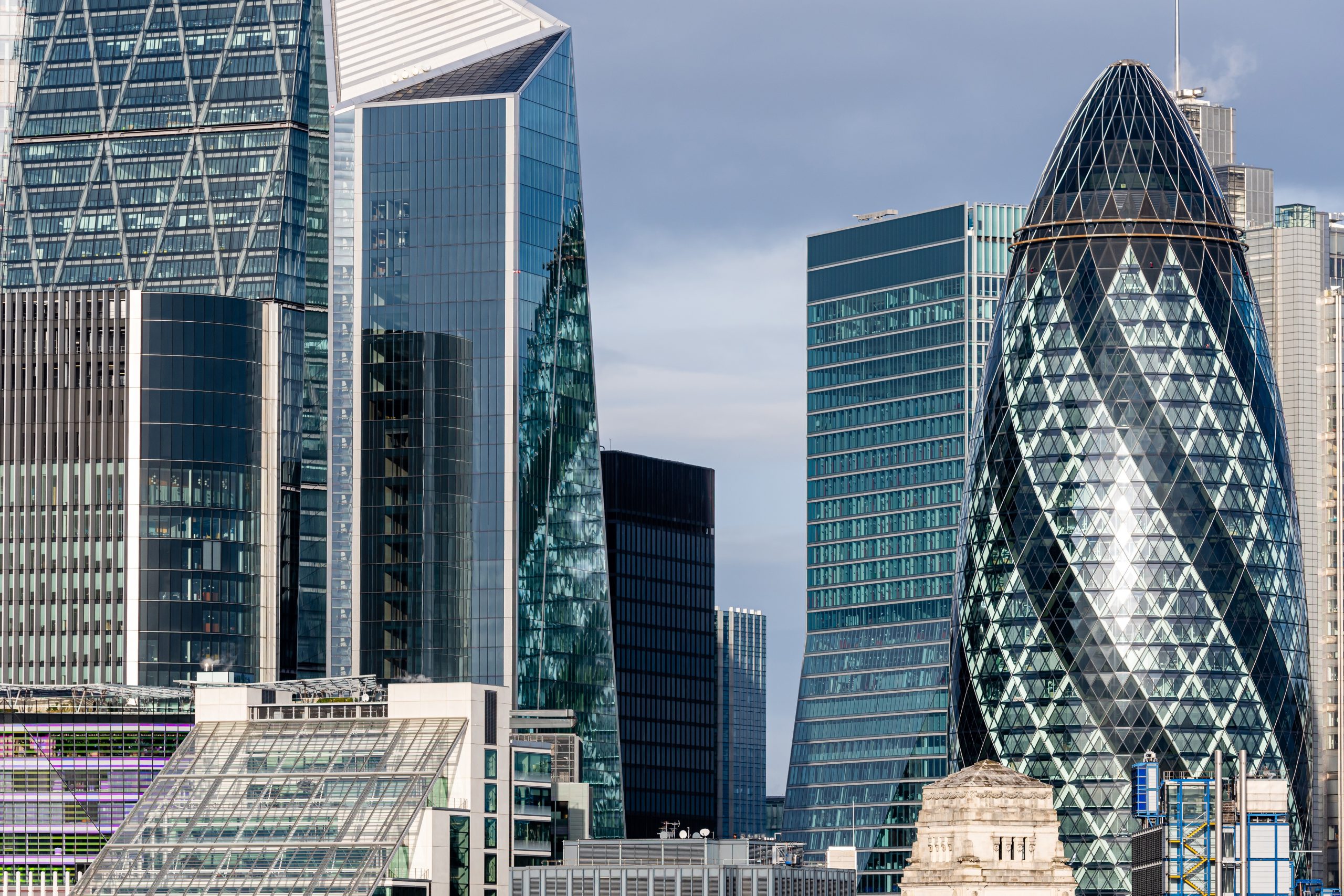After creeping slowly into shape from the emergence of the rebuilt St Paul’s Cathedral from the ashes in 1710, through the likes of Centrepoint and on to the skyscrapers of Canary Wharf, the 21st Century has seen the London skyline transformed as at no other point in history.
Where landmarks were once named with a nod to their owners or origins – the BT Tower, the Nat West Tower – we now look out on a landscape of nicknames; the Shard, the Gherkin, the Walkie Talkie and Cheesegrater.
Moving up in the world was largely the result of a new approach by Ken Livingston when he was Mayor of London between 2000 and 2008 and a trend for taller buildings was encouraged.
Few high rise buildings appeared in London before the late 20th century, thanks to a restriction on building heights originally imposed by the London Building Act of 1894. Restrictions eased a long time ago although there are still strict regulations in place to preserve protected views, in particular those of St Paul’s Cathedral, the Tower of London and Palace of Westminster, as well as to comply with the requirements of the Civil Aviation Authority.
One Canada Square
The iconic structure at the heart of Canary Wharf, very much led the way, becoming London’s tallest building at 235 metres (770 feet) when it was completed in 1991, and remains Britain’s third tallest to this day.
The original plans for the building, designed by Cesare Pelli, were part of a proposed group of three towers, all standing at 260 metres, and were bought by Olympia & York group in 1987. Their location, in what was originally to be known as Docklands Square was later renamed Canada Square and all three towers – now known as One Canada Square, 8 Canada Square and 25 Canada Square were eventually built. The second and third towers each stand at 660 feet.
Fact File: The 50-storey office is comprises serviced offices, it has 3,960 windows and 4,388 steps in four fire stairways, and there are 32 passenger lifts.
The Shard
Standing 309.6 metres high, the Shard at London Bridge was completed in 2012 and is the UK’s tallest building – incorporating an open-air viewing platform on Level 72, a main viewing platform on Level 69.
It started with developer and joint owner Irvine Sellar’s vision to create an architecturally striking vertical city incorporating retail, offices, hotel, apartments, restaurants and a public viewing gallery.
It comprises world-class offices, award-winning restaurants, the 5-star Shangri-La Hotel, exclusive residences and the UK’s highest viewing gallery, The View from The Shard, offering 360-degree views.
Levels 2 to 28 comprise office accommodation, while restaurants take up Levels 31 to 33. Moving up, The Shangri-La hotel takes up Levels 34 to 52, including 12 floors of rooms and suites and Levels 53 to 65 are private apartments.
Fact File: The lifts in The Shard travel at up to six metres per second; at the busiest point in its construction 1,450 workers from 60 different countries were helping build it.
22 Bishopsgate
The newest of the giants is 22 Bishopsgate, or Twentytwo as it is sometimes known, which was completed in 2020. At a height of 278 metres, it is London and the UK’s second highest building, although with 195,000 square metres of floor space it is thought to be the largest office building in Britain.
Its 62 floors are designed to be what developers Lipton Rogers describe as a ‘vertical village’ into which architect Karen Cook of PLP incorporated a gym and retreat, a glass climbing wall, bike parks and showers in the basement, a private clue and The Market, with its coffee shops, bars and food stalls. This is in addition, of course to the floors of commercial offices at the heart of Twentytwo.
Fact file: Twentytwo replaced a long-term plan for The Pinnacle, which was started in 2008 but suspended in 2012 during the recession. A later redesign retain was was known as its ‘helter skelter’ style exterior.
The Gherkin
Probably London’s best known, and most easily recognisable office building, The Gherkin is officially known as 30 St Mary Axe. It was completed in 2003, on the sites of the Baltic Exchange and Chamber of Shipping which were extensively damaged in 1992 in the IRA bomb attack, and stands at 180 metres (590 feet).
The Gherkin is a private office building, designed by Norman Foster and Ken Shuttleworth, and rises to 41 floors.
The ground floor plan was designed to maintain the traditional streetscape so that passers-by would be almost oblivious to the building until they were almost directly underneath it.
Fact file: Sky News broadcasts its flagship business programme, Jeff Randall Live, from a studio in the building.
The Walkie Talkie
Although it only comes in at 26th on the London skyline, 20 Fenchurch Street is still one to catch the eye of anyone scanning the horizon.
Nicknamed for its distinctive shape, the Walkie Talkie stands at 160 metres high (525 feet) and was designed by architect Rafael Vinoly and built at a cost of over £200m. Ground floor space is let for retail and the rest is office space, with a sky garden on the top floor.
The Walkie Talkie has not been without controversy. It was awarded the Carbuncle Cup – Building Design magazine’s prize for the ugliest building in the UK completed in the last 12 months – in 2015; and shortly after it was completed in 2014, an awning had to be applied to the south side of the building to remedy a solar glare issue. The sun’s rays, reflecting from the building, had been found to be creating, at times, dangerously high spot temperatures.
Fact file: The Sky Garden, on floors 35, 36 and 37 offers a richly planted green space with uninterrupted views across London from observation decks and an open-air terrace, as well as from its three restaurants.

